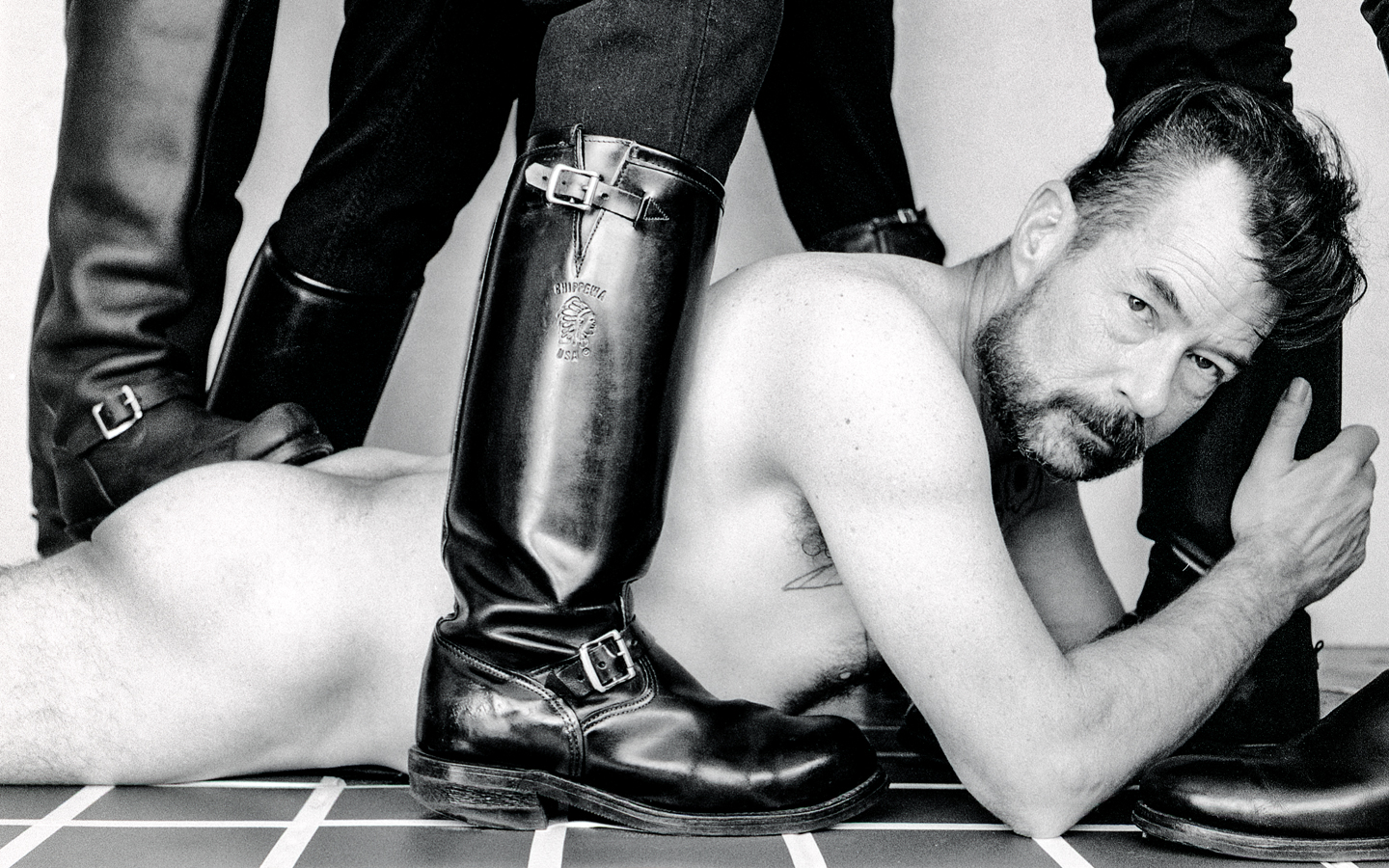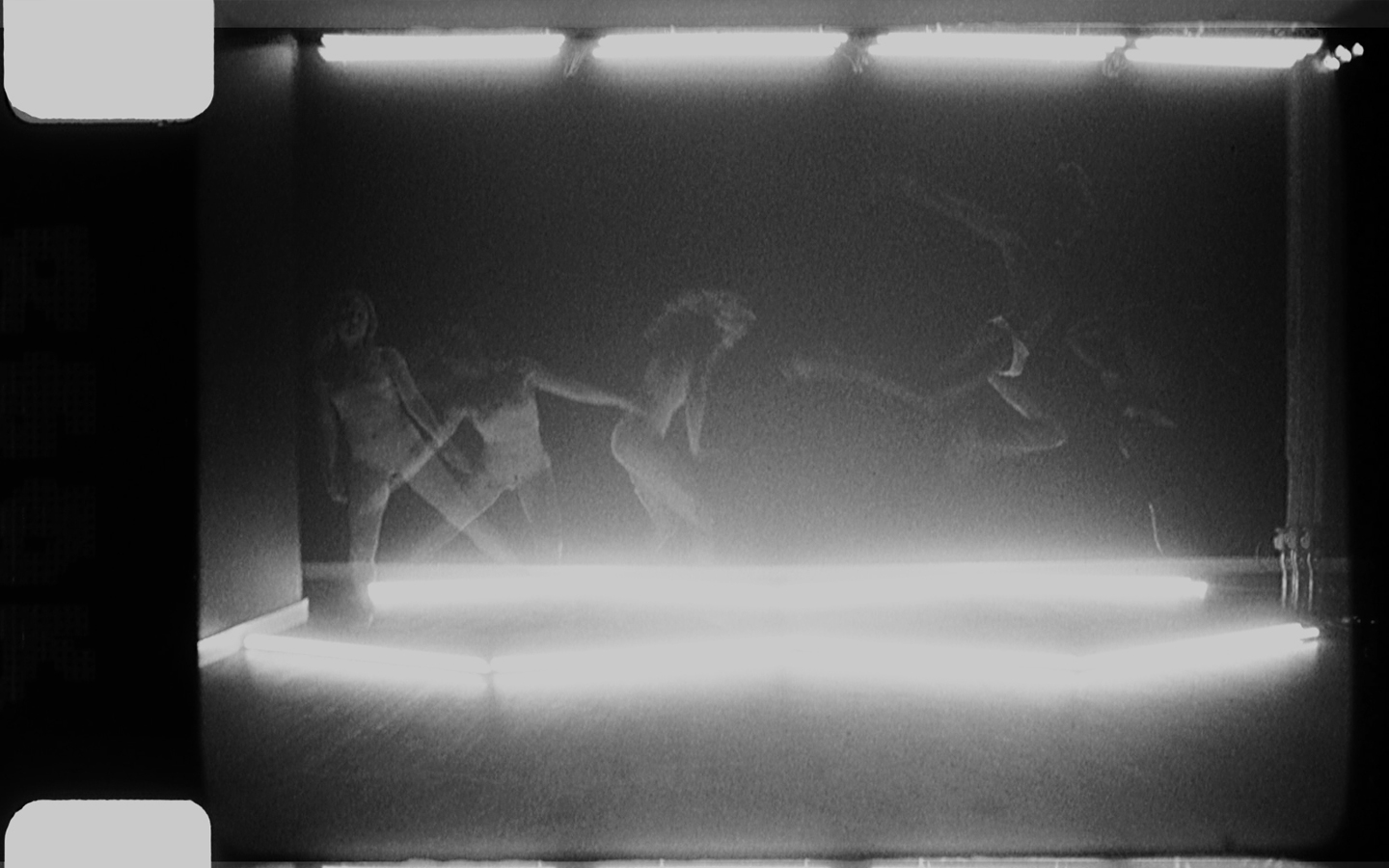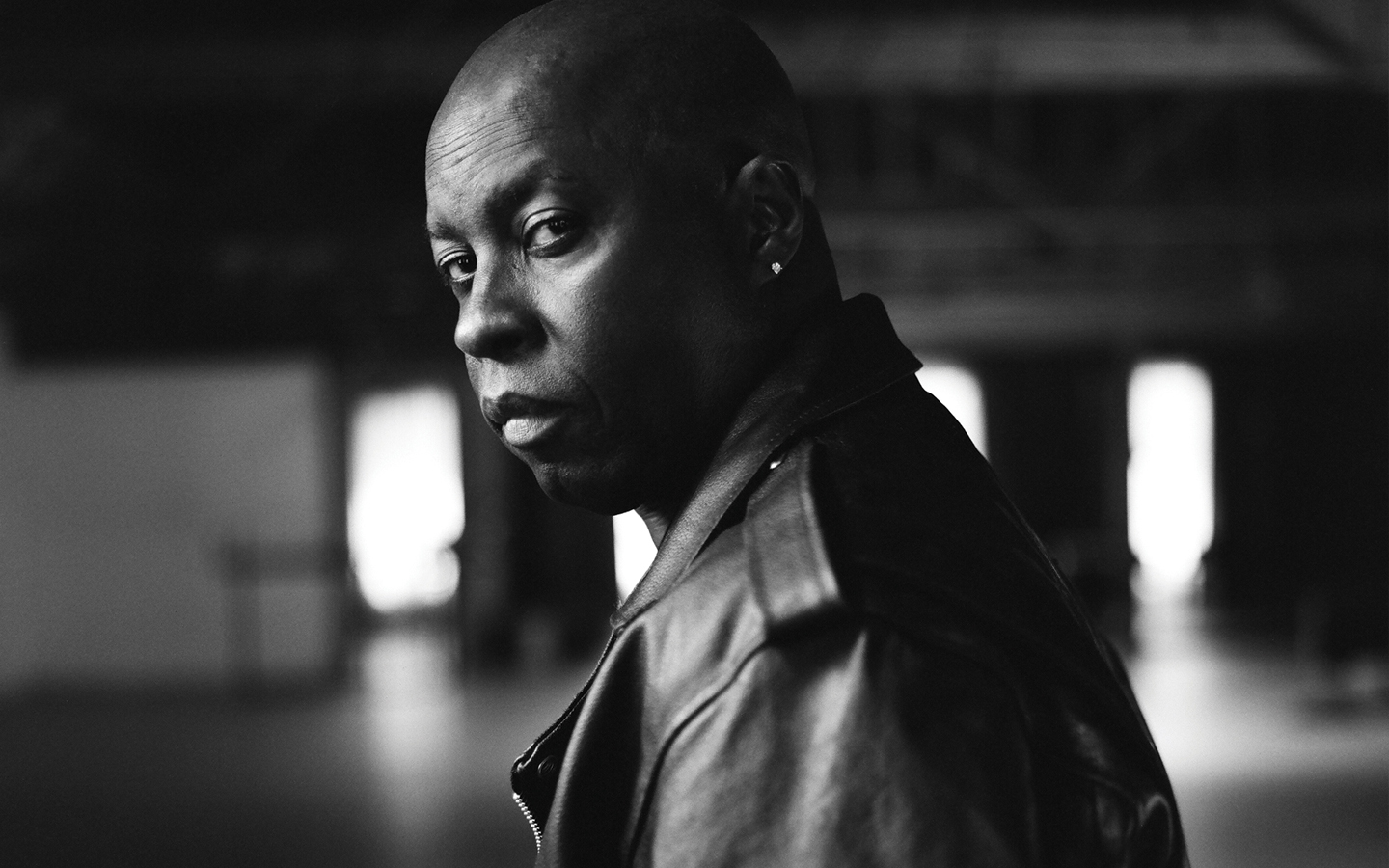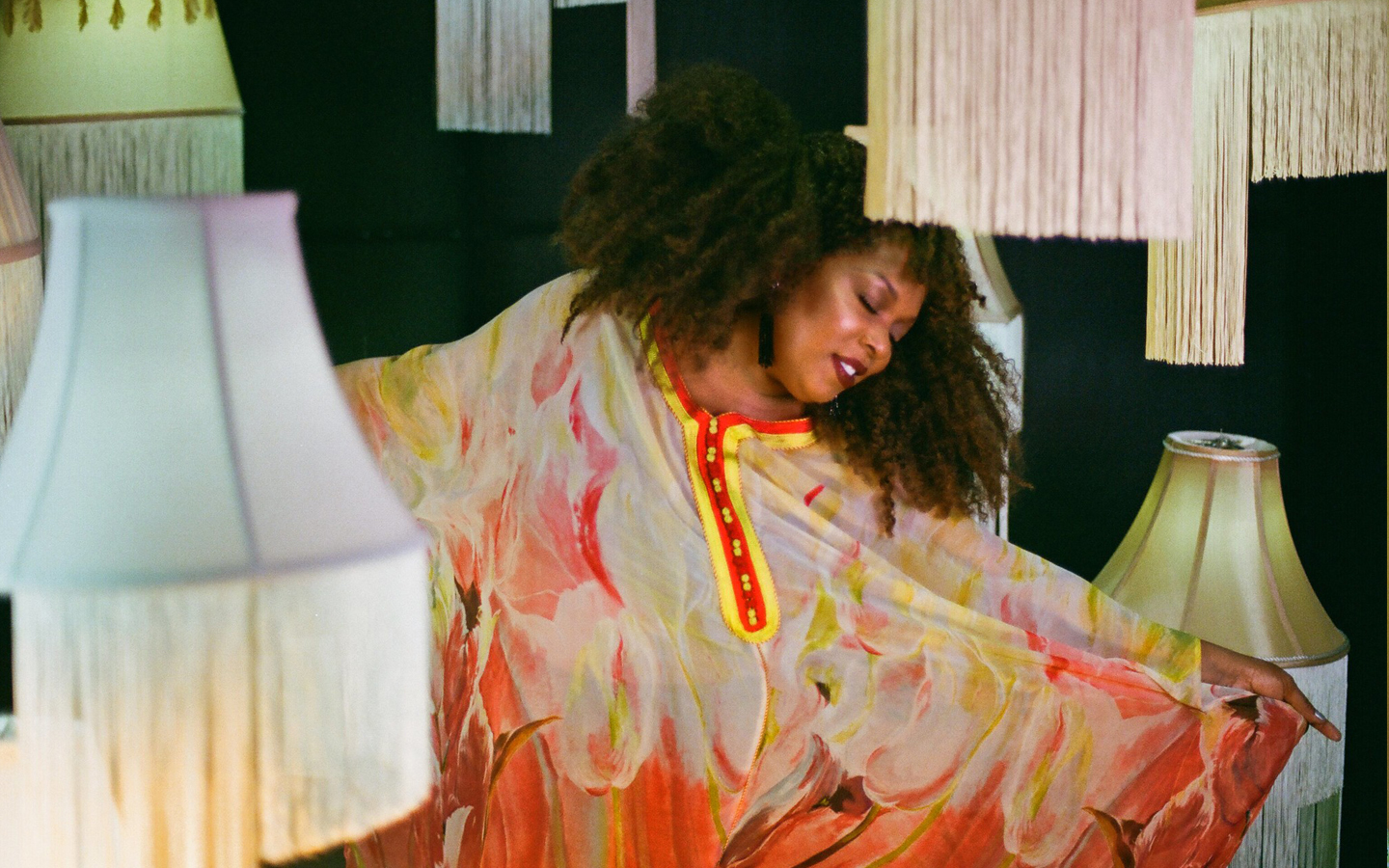
Tom of Finland
text FARIDA AMAR
& VANESSA DE HORSEY
120 film VIKTORIA RAYKOVA
When we were given the chance to cover the Tom of Finland Foundation for this issue, I felt a weight of responsibility upon me. This organization, its history, and the revered house in Echo Park, serve an important role as pioneers for gay erotica. The men running the show now carry on the legacy of their late leader. With a dedication to protect, preserve and promote erotic art, the Foundation is the only physical library and archive in the world exclusive to erotic art.
I first met Durk Dehner at the Tom of Finland House (TOM House) on a warm winter evening in Los Angeles. We were invited to come and meet everyone at one of their more regular, casual mixers, where I found Durk behind the bar, offering guests drinks that he was making himself. I extended my hand to introduce myself, and then presented him to the people with me as the founder and leader of the TOM House. He quickly re-introduced himself by telling us, “I am just here to help and serve drinks tonight, that’s all.”
The TOM House is actually a home. While Durk Dehner is the longtime owner, he and Tom of Finland (Touko Laaksonen, 8 May 1920 – 7 November 1991) established the Tom of Finland Foundation in 1984, providing a safe space for leather daddies and their friends to feel comfortable nurturing their identities and expressing themselves. As Durk explained, “We’re a family; these are my friends. I am here to help them.” The TOM House considers all erotic art important, and the Foundation welcomes it in all forms. As long as such artwork is submitted, they accept it without any kind of censorship or application fee.
Although he assumes the position of humble community facilitator, Durk has no shortage of style and carries himself with serious swagger. He had the whole getup: the leather, the buckles, the hats. There’s something very distinct about Tom of Finland style—it’s not just leather, it’s specific cuts of leather; it’s motorcycle jackets that are out of circulation; it is remnants and fragments of a past time, a vintage badassery of a distinctly confident and silent type. It was stunning to see this style in action on a living person, outside of the famed illustrations. When I asked one of our stylists if she could try to pull clothes for the shoot, my suspicions were confirmed: “You can’t get that stuff anywhere outside the TOM House these days,” she told me.
Finding ourselves gifted with privileged access to Durk, the TOM House, and TOM’s men, we decided to truly challenge ourselves. To honor the Tom of Finland Foundation, SOVO// would recreate some of Tom’s best-known illustrations on film, and do so with accuracy and authenticity. SOVO// photographer Viktoria Raykova, who was raised by a family of European scientist-engineers and finds mathematical, technical endeavors to be exciting, was up for the task. We went to the TOM House a few days later.
In the pitched attic tucked away above the second floor, Durk guided us into the bedroom where Tom lived and worked. We sat on the bed and presented our concept to Durk, who leaned over and spoke to us in an endearing tone, almost as if we were his grandchildren. He told us that many others have attempted to recreate Tom’s drawings over the years. While it frustrated him in the past that so many people wanted to try, he now realizes that this is a means of honoring and showing admiration for Tom, similar to when small children put on their father’s shoes.
Simply put, recreating Tom’s illustrations with real people has forever been physically impossible to achieve. Durk recounted the tableaus that were created as a part of Jordan Michael Green’s residency: “I was a little bit concerned because I thought, ‘Oh, you know, it’s so particular.’ Then I got it what they were doing, from an experiential level: it was [Tom’s] essence. And the guys who were participating were just having so much fun, and the audience walking around viewing it was having so much fun watching the other ones have fun. They didn’t all have the exact gear, and some things were substituted for others, but the essence—the heart—was there. That taught me something about celebrating what he created.” The beauty of trying to be like Tom, he explained, is that everyone who tries is in for an adventure; being able to laugh at yourself and with each other along the way is 100% in the spirit of Tom of Finland.
Durk understood our endeavor and its intent, telling us: “I really think the whole thing we nurture here is taking his influence and re-expressing it in another form, and that’s what you’re doing. You’re taking his drawings and you’re reinterpreting them again, and you’re using live people so [the illustrations] get to have a human experience.” He gave us his full support, and within three days, Tom of Finland curator Marc Ransdell-Bellenger, resident artist Jordan Michael Green, and model Michael Issa pulled together all the arrangements, brought whatever clothes and accessories they could find around the house, and met us at the studio.
Durk provided one piece of true advice, telling us with all seriousness: “Have fun when you fail.”
VIKTORIA: I found myself observing the dimensions and aesthetics in Tom’s drawings, mathematically and meticulously attempting to understand how to best create a bridge from Tom’s drawings to photography. Sketching lighting diagrams to understand how one could replicate the highlights and shadows, thinking how to best take the dreamy TOM’s men and duplicate their artistic proportions, observing the grain structures and deciding the best film to resemble the illustrations.
FARIDA: After many rounds of selecting the illustrations we wanted to recreate, we had a plan. We studied these images for days, looking at every element in the illustration. Almost every aspect of these illustrations were signs and symbols referencing gay culture, and all had meaning. When we asked Durk about the handkerchiefs hanging out of mens’ pockets in the drawings, he explained that “back in the gay,” men would wear different color handkerchiefs as a kind of calling card that allowed them to covertly signal to other gay men if they were a top, bottom, or versatile—among other preferences. The details were critical.
VIKTORIA: From the shape of the boots, to the collars of the leather jackets, to the jawlines of our models, everything was thought out in great detail. The addition of our amazing creative assistant Andru as a model was unexpected, but the night prior to the shoot we realized his face was the perfect fit for one of the images. The makeup, the light, the composition—it was one of those moments when the formula for success couldn’t have been more ideal.
FARIDA: There were endless variables that we had to consider, and it pushed us to become resourceful and inventive. We spent an entire day at Home Depot to find the perfect tile size and color to match one of the images; we ended up spray-painting linoleum and white tape in the dark behind my house the night before the shoot.
Stuffing jockstraps with socks to get the right bulge, tipping a hat unnaturally forward on the head without it falling off altogether, finding the distance the camera needed to be from the subject so the framing was as accurate as possible, measuring every inch and making endless slight adjustments over the course of a six-hour photoshoot.
Jill Fogel, our makeup artist, added shading on the men’s bodies to produce a slight graphite reference; Viktoria picked a grainy black and white film stock to make the photographs resemble a drawing without using any special effects or post-production editing. We slid small towels between naked models and the floor to mitigate chafing, finding just how challenging it was to actually twist a body to match the shapes and forms of the original illustrations. And yet, with a certain amount of physical and artistic flexibility, we learned how the potential for these bonafide men of Tom’s dreams to exist is not only visually impressive, but actually realistic. By the end, we were proud of ourselves; we also had a much deeper respect and admiration for Tom and his iconic work.
VIKTORIA: Actually, when I look at all the selected images, I find myself in awe. To paint with light on the black leather surfaces and smooth skin tones of the models made light feel like more like a paint brush. It was an invigorating experience, and it made me feel like a different kind of creative mind than I had ever known myself to be. As an artist, you’re constantly striving to make your own unique imprint on the world. Therefore, it can be difficult to replicate someone else’s work—to try to speak in someone else’s voice. Tom of Finland’s art is iconic in the gay community. As a photographer, I was honored by the chance to use photography in an attempt to replicate such a meaningful body of work.
VANESSA: On a rainy day, I arrived at the Tom House with Farida, Milana, and Virginia. We went there to show the photographs to Durk, but we stayed for two hours drinking tea, eating Durk’s blueberry-apple cake, and exploring the seemingly endless cultural landmark. In the dining room, some of Tom’s reference images lay arranged beneath a clear tablecloth; original newspaper clippings and illustrations of all sizes were framed on the walls. As From the foyer staircase, I looked up to see collages filling the spaces where paint had chipped on the ceilings. They all fit the theme of TOM House—from erotic reference images to the classic leather boots in Tom’s drawings (albeit in pink)—yet each had a distinctive style. When I asked about them, one of the men told me that Durk loves collages and asks each resident artist to add one of their own during their stay in the house. Among the vast collection of art, artifacts, trinkets, and furniture, Tom of Finland-themed objects emerged everywhere I looked: ceramic plates, sculptures, belt buckles, dildos, a cookie jar.
Durk showed us erotic art submitted to their library, providing historical and contextual details for each piece with an air of stoic pride. In the attic, he presented some of Tom’s personal belongings and their backstories: a Finnish uniform from WWII, a Puupäähattu Award, hats, boots, art tools, the last sketch Tom was working on before he died, and a copy of Physique Pictorial from 1957—the first publication to feature Tom’s work. Durk gave each of us a hat to try on and we took pictures together, sitting on the bed atop a Tom of Finland blanket, next to leather pillows, surrounded by Tom’s most precious items.
Before we left the room, I thanked Durk for sharing so much with us, and expressed how special it was to experience Tom’s life in this very intimate way. When I told him that it made me feel close to Tom, he lit up; looking me in the eyes with one of the most tender expressions I’ve ever seen, he replied, “That’s exactly what I want. As long as I’m here, I want others to be able to see and touch the things that were important to Tom.” ҂




